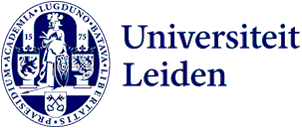
App helps students study better
Cramming from a book, making notes or learning summaries. In the past these were about the only ways to memorise your course material. But that has long since changed. Multimedia is the code word. But is it effective?
Associate Professor of Chemistry Ludo Juurlink imported an app from the United States that helps students absorb vast amounts of information.
‘All those students who cram at the last minute. It’s no good,’ says Juurlink. ‘We’ve known for a century that it doesn’t work.’ He thinks the current education system is too focused on earning credits. ‘You have to jump hurdles, but no one checks whether the knowledge has actually stuck. And yet it’s important that our doctors know all the bones and muscles in the body and our chemists the chemical notations. You need to know it off by heart to be able to do the job properly.’
At a teaching and learning conference in Australia, he found the solution: the Cerego app, which is used all around the world, for medical degrees, for instance. He started using it in Leiden and it has been a success. His appointment as Fellow of the Leiden Teachers’ Academy provided 25,000 euros for research and his appointment as Leadership Fellow secured him the prestigious Comenius Grant of 250,000 euros. This has enabled him and his student assistants to carry out the Studying Mobile research project.
More efficient learning
What began with a single course in the Cerego app has now grown to include more than 20 courses in medicine, bio-pharmaceutical sciences, chemistry, life science and technology, molecular science and technology, and archaeology. You learn and practise the course materials in an app on your phone. ‘You can practise while you’re waiting for the bus. That’s completely different from having to open a 1,200-page book. You therefore use dead time to learn boring material.’
The app presents the material in different ways. You learn the bones by identifying them in a picture, for instance, but also by typing in their names. ‘Variety makes it more likely to stick. But perhaps more importantly, it also tracks how much the student learns. If the error margin in the answers is still high, they will have to repeat things more often. If it is low, new material is added. The computer gradually discovers how and at what pace the student learns best and then sends push messages if they need to repeat something. This personification is really valuable because it makes the learning so much more efficient.’
App users do better
The results speak for themselves. ‘In exams we see a clear difference between the students who use Cerego and those who don’t. It looks to be extremely suited to rote learning, and the long-term retention seems better too. In addition, and this surprised us, the group that uses the app seems able to do more with the knowledge they’ve learned than the group that doesn’t.’
Juurlink predicts that technology will become ‘immensely’ important in education. ‘Universities will soon face competition from many educational institutions that no longer have a building. Obviously, our educational institutions will retain their quality and it remains to be seen what the level of ‘Google University’ will be, but it’s an unmistakable trend. Things will be digital and remote. And therefore much cheaper. This won’t take anything like 50 years. If you consider that almost everyone in Africa has a mobile phone, you can see that this represents huge opportunities.’
Students write textbook
Juurlink is already working on something new. He has developed a master’s course in which students learn to communicate via figures. ‘For natural scientists reading and creating figures is essential. Text is supplementary for us.’ He has used this as the basis of an interdisciplinary master’s course for which there isn’t yet a decent textbook. ‘The students all write a part of the book Surface Science – for Students by Students. And the next group will improve the previous work and add new material. The book will therefore get bigger and better, and the students will learn all about not only creating figures for texts in the natural sciences but also about writing and using figures. When it is finished it will be a fantastic standard work that everyone can use.’
This article was previously published in Leidraad, the magazine for Leiden University alumni. Also read about the five benefits of ICT tools in education and which learning strategy master’s journalism student Vera Brouwer is using.
Text: Marijn Kramp
Photo: Hielco Kuipers
